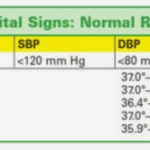Hospice is about living!

Hospice care is a specialized form of medical care for individuals with a life expectancy of six months or less, focusing on comfort, quality of life, and symptom management. It affirms life and recognizes dying as a natural process, neither hastening nor postponing death. The aim of hospice is to help patients live as fully and comfortably as possible, providing comprehensive support for both the patient and their family. This unique approach to care is exemplified by the stories of patients with terminal cancer who, with the help of hospice, were able to fulfill their final wishes, such as feeling the sun on their face or visiting the beach one last time. These experiences highlight that hospice is not just about dying, but about making the most of the time that remains, finding joy, and creating meaningful moments.
Explaining Vital Signs to Patients and Families on Hospice

I don’t know about you, but every time I see a patient and their family for the first time and take their vitals as part of the nursing assessment, either after each vital or at the end of the vital checks, I’m asked something to the effect of “is that good?”
As you, my friendly readers, bloom as hospice nurses, you will learn that the vital sign portion of the assessment is just a smidge of the entire assessment as to whether someone is approaching the end of life, going through reversible or terminal restlessness, or just having a difficult day. Let me share how I educate families that get hyper-focused on vitals.
Assessing pain in non-verbal patients

Pain is a subjective sensation that can affect a person’s physical, emotional, and spiritual well-being. While pain can be measured objectively by using vital signs such as temperature, pulse, blood pressure, and respiration count, these indicators may not reflect the true intensity of pain that a person is experiencing. This is especially true for non-verbal patients, who cannot communicate their pain verbally. Non-verbal patients may include those with advanced dementia, terminal illness, or other conditions that impair their speech. In this article, I will discuss the importance of assessing pain in non-verbal patients, the tools and methods that can be used to do so, and the benefits of providing adequate pain relief for these patients.
